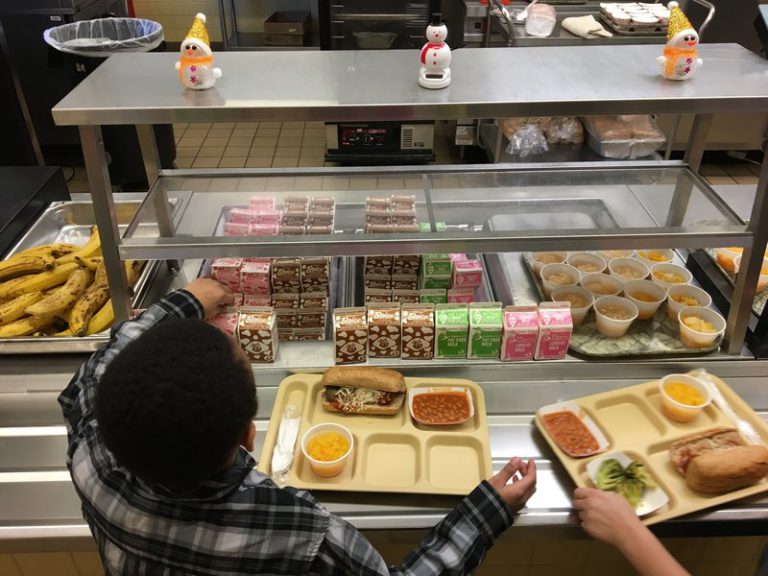CHAMPAIGN – Some Illinois school officials are upset that the U.S. Department of Agriculture has not extended waivers that would allow districts to continue serving free meals to all students under 18 years of age.
In a typical school year, students must meet specific criteria to qualify for the USDA-operated National School Lunch Program. Families must have a household income within 130% of the federal poverty threshold in order for their children to receive free meals, while families with incomes between 130% and 185% of the threshold are eligible to receive school meals at a reduced price.
In March, when the COVID-19 pandemic forced the closure of schools across the country, the USDA issued waivers allowing schools to serve free breakfast and lunch to all children under 18 regardless of whether they qualified for the National School Lunch Program or if they attended that district. Schools had to track how many meals they served, and would then be reimbursed for those meals from the federal government.
The USDA said the waivers were possible as a result of funding provided by Congress in a coronavirus relief bill. Now, however, the department says providing free meals to any child under 18 regardless of their eligibility or whether they’re enrolled in a particular school district is no longer allowed or feasible. In a letter sent to Democratic Congressman Bobby Scott earlier this month, USDA Secretary Sonny Perdue wrote that extending the necessary waivers “would be closer to a universal school meals program which Congress has not authorized or funded. Should Congress choose to go in this direction, USDA stands ready to provide technical assistance.”
This week, Laura Dees, food service director for Champaign Unit 4 Schools, says she was unable to provide meals to a child under the age of five because of the change in USDA policy. She says the child previously received free meals from the district under the waivers issued earlier this year.
Dees says the district is fielding calls from families requesting meals and, unfortunately, she has to explain that only registered students who meet the eligibility requirements can receive free meals from the district now.
“I have been participating in calls with the Illinois State Board of Education. And I think, financially, the USDA is not able to fund it without additional stimulus packages that come from Congress. And so we will most likely not get any extension until something is passed,” Dees says.
She says she’s contacted her representatives in Congress, urging them to pass a bill that would allow more children access to free school meals.
“I think that with the high unemployment rate, it does make a huge difference, with families who possibly wouldn’t have needed our services in the past. And so we just want to expand that access,” Dees says.
The change in USDA policy has also presented a logistical challenge for school districts. Vic Zimmerman, superintendent of Monticello Community Unit School District 25, says districts now have to track whether students are required to pay for meals, receive a discounted price, or meet the requirements for free meals.
Unlike Champaign schools, which are operating remotely for the first quarter of the school year, the Monticello district has adopted a hybrid model.
Zimmerman says about 85% of district students will come to school for a shortened school day, while the remaining 15% will learn entirely remotely. Families of students who are participating remotely must pick up student meals on Monday evenings via a drive-thru system. High school and middle school students participating in in-person instruction will take their lunches home with them as they leave school for the day, while elementary students will eat at school in groups of less than 50.
Tracking every meal to ensure that students are properly charged according to their status in the National School Lunch Program is just another logistical challenge on top of many unprecedented problems that school districts must deal with now, Zimmerman says.
“Logistically, it’s just absolutely nuts with all of the safety requirements from (the Illinois Department of Public Health) with masking, social distancing, gathering, hand washing, busing limits… temperature, symptom checking. So the logistics are already crazy and we were hoping for the ability to have that waiver. So that would just reduce one area of logistics we’re going to have to deal with,” he says.
Zimmerman says the district will “manage it,” but he hopes the waiver is once again extended to reduce logistical hurdles for districts and increase access to food for families in need.
More information about Champaign Unit 4’s food service program for the fall can be found here. Information about the reopening plan for Monticello CUSD 25 can be found here.

